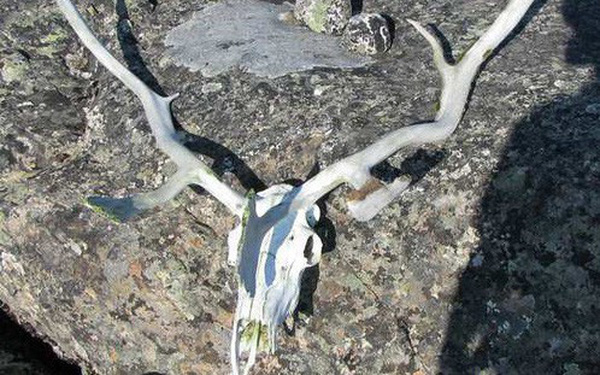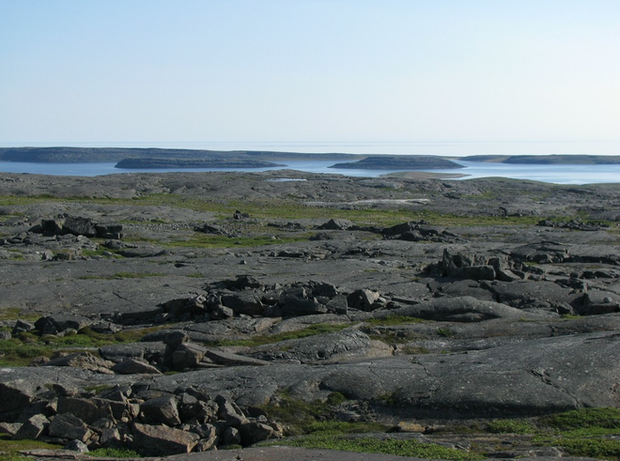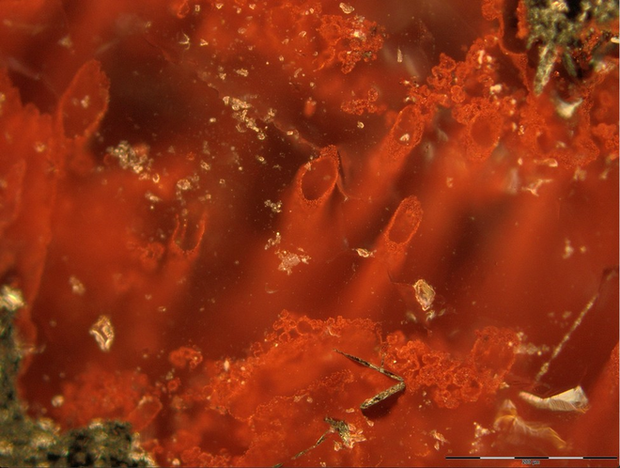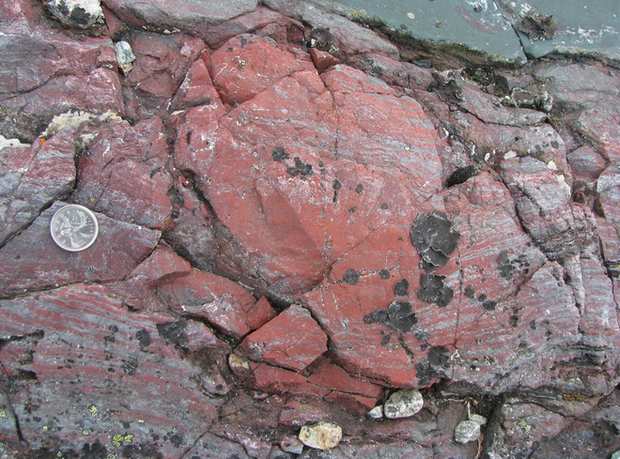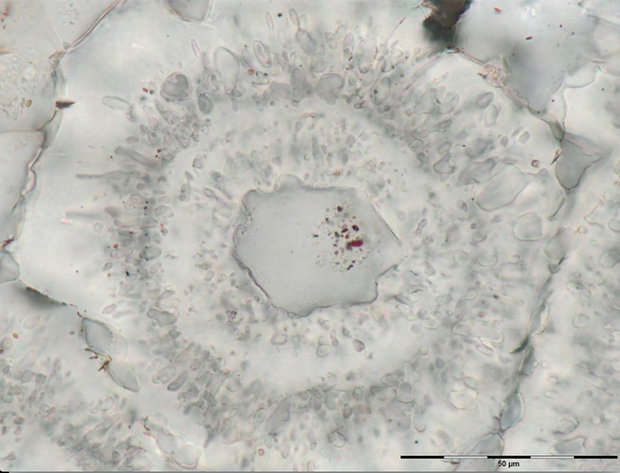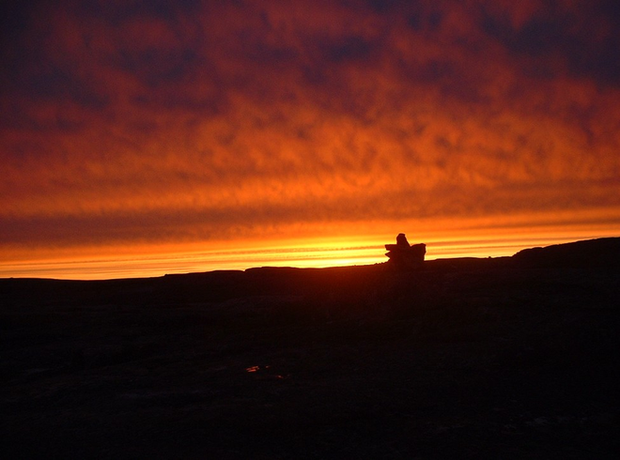The international team of researchers claim that these “creatures” are between 3.8 and 4.3 billion years old – making them the oldest “creatures” ever found on our planet.
About 35 km north of Inukjuak – an Inuit village in northern Quebec – is a strip of rock that rises abnormally from the ground. This rock is known as the Nuvvuagittuq supracrustal belt, which is mainly composed of gray-green rocks, with red veined edges.
If you climb this rock and you’re not a geologist, you probably won’t realize what you’re standing on. These rocks are believed to have formed billions of years ago at the bottom of prehistoric oceans, near ancient hydrothermal vents. And they bear the sign of an incredible ancient form of life, capable of rewriting the history of planet Earth!
This rock is between 3.8 and 4.3 billion years old – the oldest rock ever found on our planet, said an international team of researchers. But that’s not all. Their particular structure is indicative of the presence of ancient microbial strains, which makes them the oldest “micro fossils” ever discovered, and also the oldest evidence of life on Earth.
The suprcrustal belt of Nuvvuagittuq, behind is a small part of the island of Nastapoka.
Our planet is only 4.5 billion years old. By the time this rock formed, the Earth was only cooled and the oceans formed only a few hundred million years ago, the atmosphere was very toxic and the planetary state could hardly allow any form. . All life that we know today exists. This first period of the Earth – known as Hadean Eon, around 4.5 to 4 billion years ago – is so hellish that it is named after Hades (Greek mythology of the underworld).
This is one of the reasons why such discoveries are so important: If life could have happened on the early Earth, it could have happened on other planets as well!
Hematite tubes from NSB deposits to hydrothermal vents reveal the oldest micro-fossils on the planet and also evidence of life on Earth.
Geochemist Dominic Papineau – from Quebec – carried out a field survey in the north of the province in 2011. To get there, he had to make three consecutive flights on the craft; fly a small propeller, same 3 hours of boat.
Papineau did not expect to find fossils, mainly because the rocks were heavily metamorphosed (meaning they underwent changes under tremendous pressure and heat beneath the earth’s crust – a process known to have been believed to destroy any sign of life).
The bright red refractive nodule layer of silicate hematite contains microorganisms. A dark blue volcanic rock in the upper right shows hydrothermal precipitates on the seabed
It was strange to see this bright red metallic battle scene scattered across a gray-green landscape, Papineau says. “One theory about these rocks is that there was a biological effect in the process of their formation” – said the professor at the University of London (UCL).
Some types of bacteria that exist today can “harvest” the nutrients from iron through a chemical reaction. Papineau wondered if similar organisms existed about 4 billion years ago?
“I was curious to see what these rocks looked like, so I sampled them” – says Papineau – “But what made me think that there was something important that was probably stored at the interior is when I searched. formed by bacteria) were found on the site “.
Red iron deposits (hematite – an iron mineral) found in quartz form many tubular, fibrous, granular, and asteroid structures. Although this shows the possibility of this rock of biological origin, but it is still only “probable” only. There are many ways to build such structures through abiotic interactions, so Papineau and other scientists will need to dig deeper. An interesting feature of the aforementioned formation is the other mineral layers surrounding them.
“The asterisks we have are made up of carbonate with apatite and carbon graphite. Carbonate and apatite are what make up bone,” he said.
In other words, it is organic matter likely to come from micro-fossils.
At UCL, Papineau and lead author Matthew Dodd used microscopy and spectroscopy to continue to study these rocks. Finally, they concluded that there is evidence of microfossils from ancient organisms oxidizing iron.
There are only a handful of places in the world where you can find rocks of a similar age. One of them is the accretion structures in Greenland. In 2016, scientists announced that they had discovered fossils there that were 3.7 billion years old and, at the time of their discovery, they were the oldest known fossils.
These fossils are formed during the same geological period as the rocks in this article, and are formed by microorganisms that “breathe” oxygen. This means that not only is there life in the very early stages of our planet, but they are also very diverse.
“If there were actually bacteria producing oxygen, there were also iron-oxidizing bacteria near the hydrothermal vents, so life was quite diverse, because these bacteria were related (albeit quite distant.) With them. microbes today “- said Papineau.
Finding two distinct branches of life in a very early period of planetary history opens the door to the search for life on other planets. If two distinct species of bacteria could have lived on Earth so early, they could also be found near hydrothermal vents in the ancient seas of Mars, or even inside Europe’s underground ocean. Scientists have found clusters of hematite on Mars in the form of “blueberries” discovered by the Opportunity rover.
Papineau chose Quebec as his target because after discovering Greenland, he knew that similar specimens could be found closer to him. “This is my native province. This is my country” – he said. By discovering these ancient local rocks in the north, he and his collaborators rewrote the history of life on Earth.


